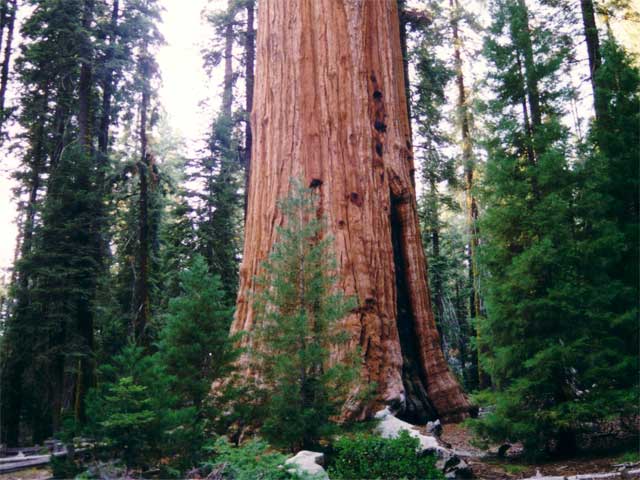The Tree That Owns Itself.
In around 1830, Colonel William Jackson, who loved this white oak tree very much, deeded the tree to itself:
I, W. H. Jackson, of the county of Clarke, of the one part, and the oak tree . . . of the county of Clarke, of the other part: Witnesseth, That the said W. H. Jackson for and in consideration of the great affection which he bears said tree, and his great desire to see it protected has conveyed, and by these presents do convey unto the said oak tree entire possession of itself and of all land within eight feet of it on all sides.
So, supposedly, the tree owns itself and the land around it.
(I’m reminded of what Young Chief of the Cayuses tribe said in 1855, upon signing over their lands to the U.S. Government: “I wonder if the Ground has anything to say? I wonder if the ground is listening to what is said?”)
Now legal experts say that this has practically no legal force at all for several reasons: One, in order to become the legal owner of something given to you, you must have the legal capacity to receive it, and it must be accepted by you. And some would say that the tree does not have the legal capacity to receive property. A related legal notion is that nothing which can be owned can own anything else. For example slaves: Can slaves legally own something? Some would argue that their being owned by something means that the slave’s so-called property is defacto the property of the slave’s owner. But more interestingly: can anything own itself? What would it mean to own yourself? We have a good idea of what it means to own ordinary objects like cars and houses: you have the right to use the objects as you like (so long as you don’t infringe on anyone else’s rights), you can sell the objects, you can destroy the object if you want, you can move it, or change it. But it’s a little stranger to apply these ideas to yourself. You can’t sell yourself or destroy yourself (though suicide has been officially decriminalized in all US states, it is still considered an unwritten “common law” crime).
Anyway, the tree fell down in the 40’s, and a cutting of the tree was planted in its place. They call it Son Of The Tree That Owns Itself. The state of Georgia basically acts like it owns the land, and takes care of it like it’s a park.
The Lost Monarch.
It's 26 feet in diameter (82 feet circumference). It would take about 14 people to hug it. Its about 320 feet high. It’s the largest known Coast Redwood. The tree is estimated to contain 42,500 cubic feet (1,200 m³) of wood. It’s probably pretty old. There’s no pictures of it because it’s hidden. They don’t want us to know where it is. That’s okay. It’s probably better that way. I like knowing that it’s out there though.
Pando.
Okay, now Pando isn’t really a tree. It’s a clonal colony of a single male Quaking Aspen (Populus tremuloides) located in Utah. Basically, it’s a giant root system that sends up stems that are taken to be trees (Aspens). But it’s actually a single organism. Pando weighs 6,615 tons, and is approximately 80,000 years old. It is the oldest, and heaviest living organism on the planet.









3 comments:
i heart you, pando. cuddly wuddly.
Go pando! (but watch out for creation bear - he's vicious).
The Lost Monarch tree is now closer to the 7th or 8th largest than it would be the 1st in rank.
Publications that covered the Pando Aspen never mentioned much that coast redwood groves probably exist that would surpass it. It's been proven redwood share roots, due to dye passed through a grove. But I think the scientists skipped the DNA test expense because they know too well the redwoods clone themselves through sprouts off roots, and feel no need to go that angle in research.
Cheers,
MDV / http://www.mdvaden.com/grove_of_titans.shtml
Post a Comment